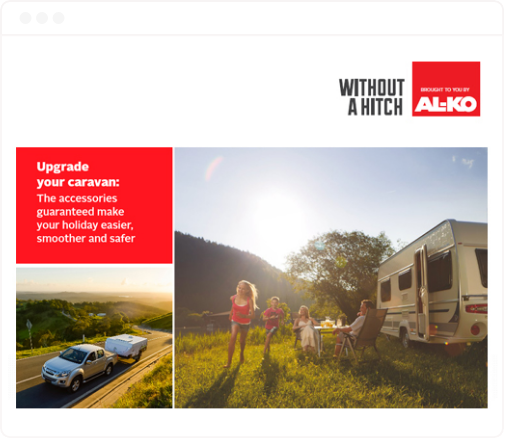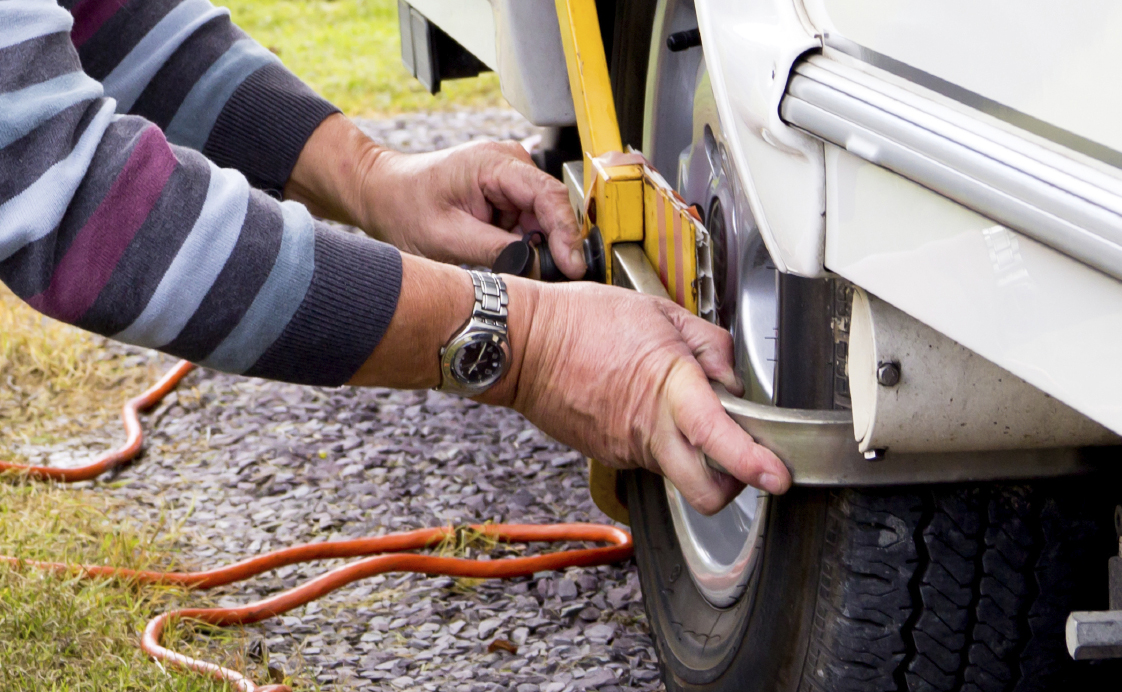Connecting a caravan to a vehicle is fairly uncomplicated, but there are a few tricks that you learn from experience. These are the top five things I’ve learned about hitching up over the years that can bypass problems before they arise.
1. GET OUT THE SCALES
You might have a fair idea of what your van should weigh from the compliance plate, but with optional extras that might have been fitted after the van was built, not to mention the gear you pack, the Tare mass figure, as well as any figure given for the unladen towball mass may change significantly.
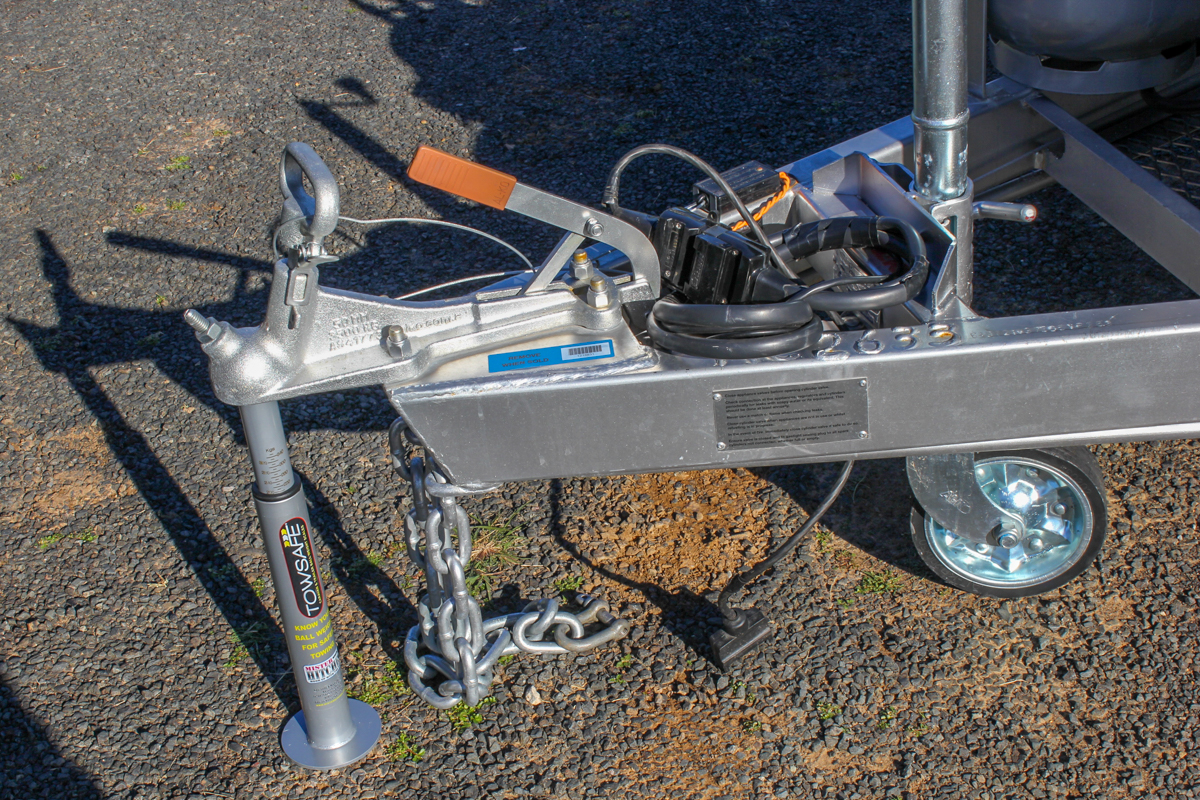
A towball mass that is much higher than originally estimated can make life very difficult after you’ve hitched up the van. Loading heavy equipment into the van’s front boot can significantly increase the towball mass, throwing out the balance of the van and making your tow vehicle drop down on its rear suspension.
Therefore, it’s always best to independently weigh the towball mass of your van with a portable set of ball weight scales, or as part of the weighing-in you should do once in a while at a public weighbridge to ensure you are still within your limits.
2. STAY ON THE LEVEL
Sometimes you’ll have to reverse your vehicle at an angle when hitching up on uneven ground. A small angle is okay, but you will soon find out how hard it is to disengage the coupling when there’s too sharp an angle between the coupling and the hitch. The coupling tongue can become jammed up against the towball head and will not release. Bouncing the back of the vehicle can sometimes help release the coupling, but should not be relied upon.
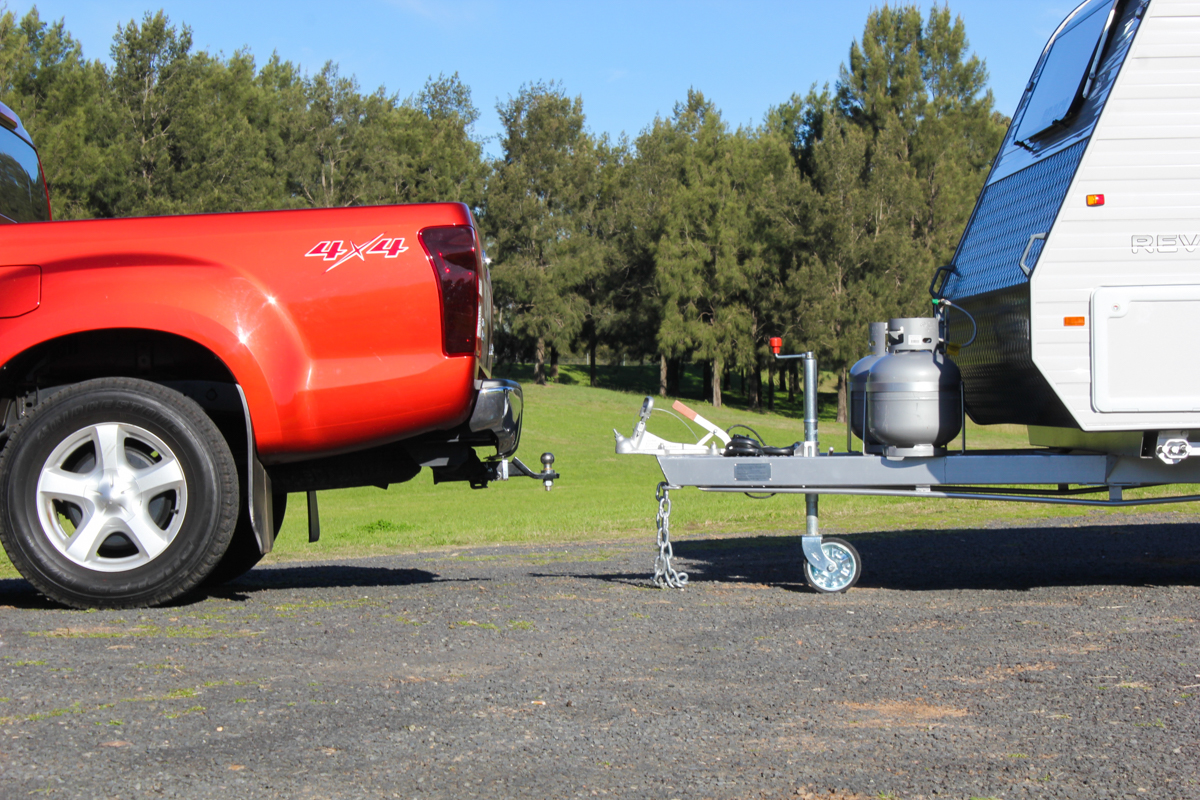
You will also have the same problem when trying to hitch up again — the coupling simply won’t engage. You can slowly maneuver it onto level ground with the van hitched up and try again to lock the coupling in. Better still: try to avoid sharp angles and uneven ground in the first place.
3. GRAB A CAMERA
Rear-view cameras are a great invention, and some are better than others. If you’re buying a new tow vehicle, plenty of them now come with a rear-view cameras as standard (some even have a centre line or a hitch up specific setting to help you line up the coupling with the towball).
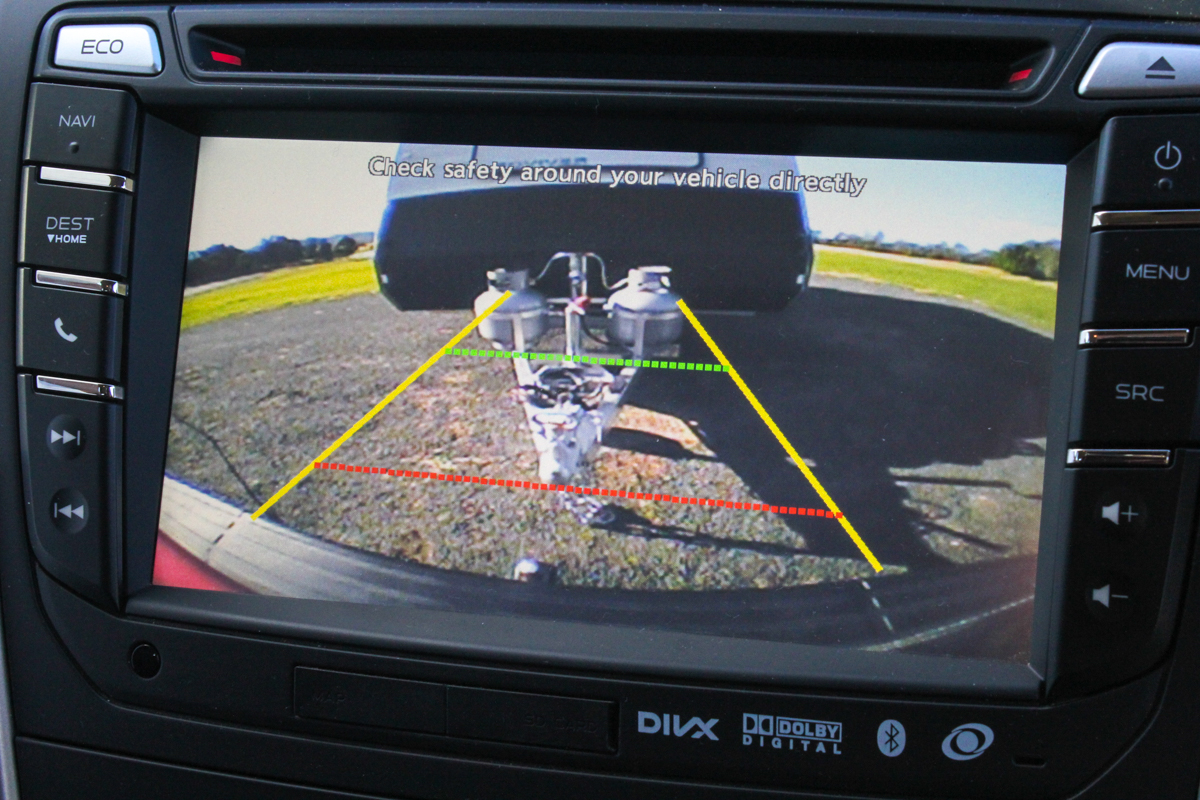
If not, there are many affordable aftermarket options on the market. It is recommended that you buy one with as wide an angle as possible and angled down enough so that you get the towball in the picture.
These neat devices make lining up the towball to the coupling a one-step, one-person job, but you still need to be aware of your surroundings and not focus solely on the camera display.
4. KEEP CABLES TIDY
Caravans these days usually have too much cable length rather than not enough for connecting to the tow vehicle. That’s probably a good thing, especially if you have a weight distribution hitch with an extended tongue. In any case, if you find you’ve got too much trailer cable to deal with, loop it though the coupling handle (if it’s a seven-pin connector; 12-pin connectors are too big for this).
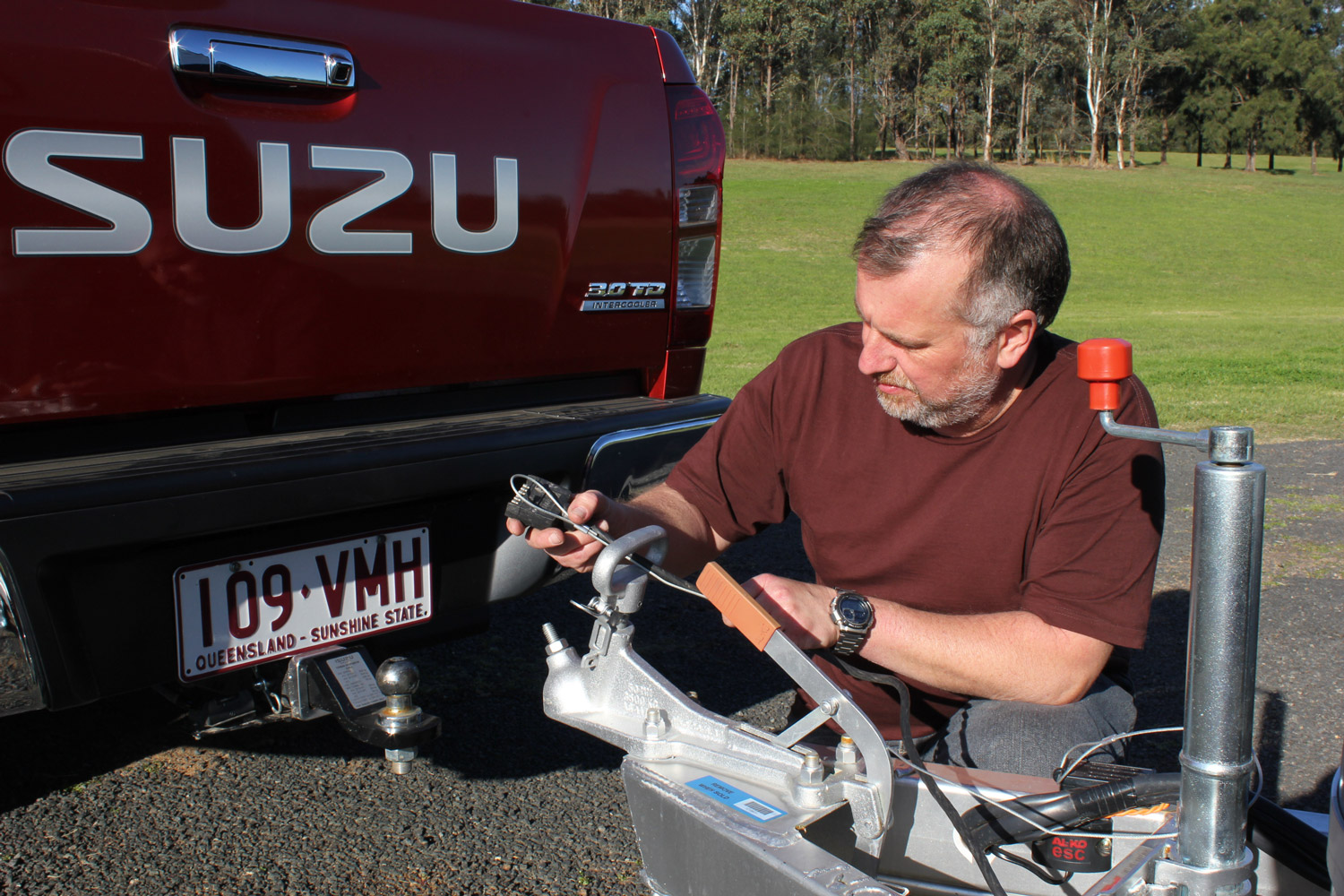
If you’ve still got too much slack, or you’ve got a 12-pin connector, loop up the excess and cable-tie it to the A-frame. If you don’t get rid of the slack, you run the risk of the wires jamming in a pinch point or scraping on the ground which could cause you all sorts of electrical misery.
5. LEAVE CHAINS UNTIL LAST
Generally speaking, a caravan handbrake is not quite as effective as a car handbrake. Even when the van’s brakes and the cable for the handbrake are adjusted properly, you shouldn’t always rely on the handbrake alone.
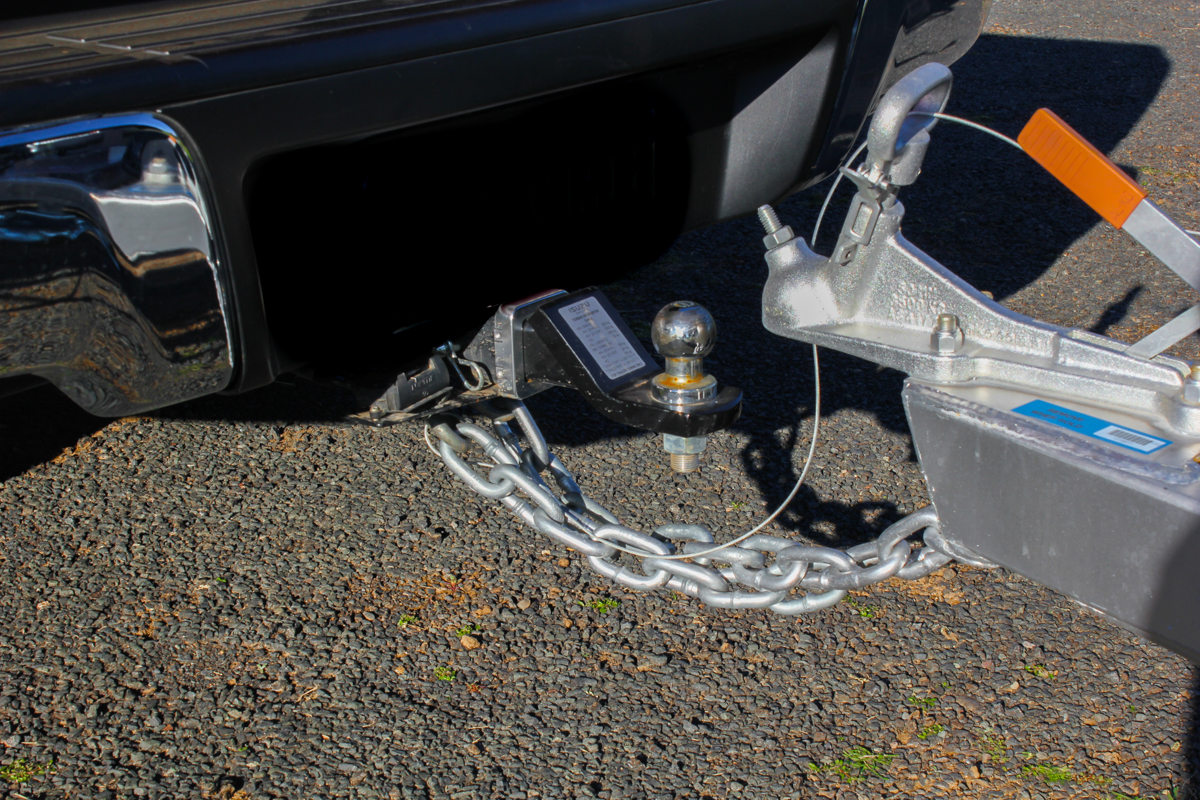
This is especially the case when you’ve parked on an incline. After you’ve unhitched the van, it could end up taking off on its own. The easiest way of making sure it’s secure is to leave taking off the safety chains until the coupling is raised off the towball and the wheels are chocked. If for some reason the van begins to move back, the safety chains still attached to the tow vehicle will make sure it doesn’t get far.


